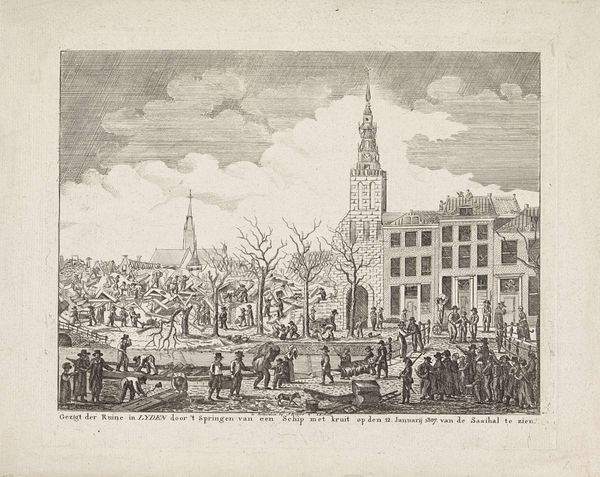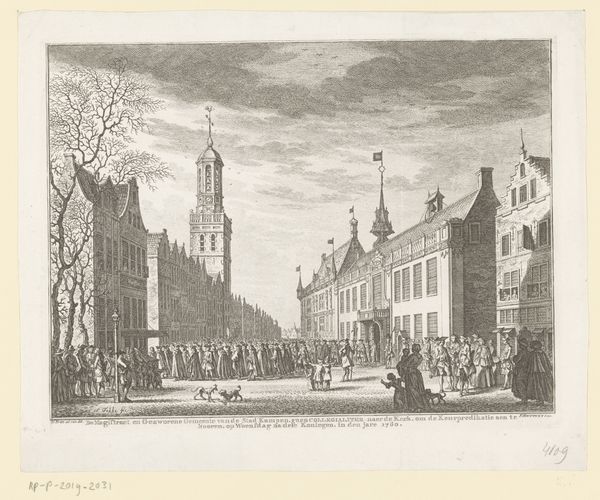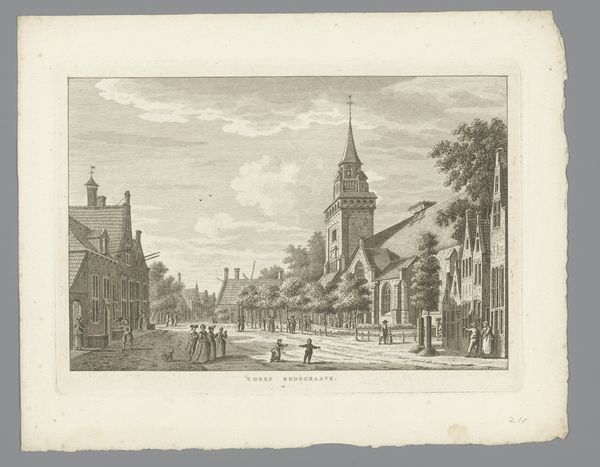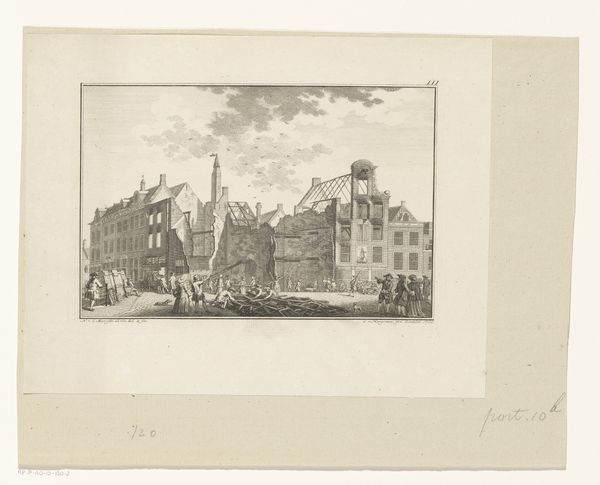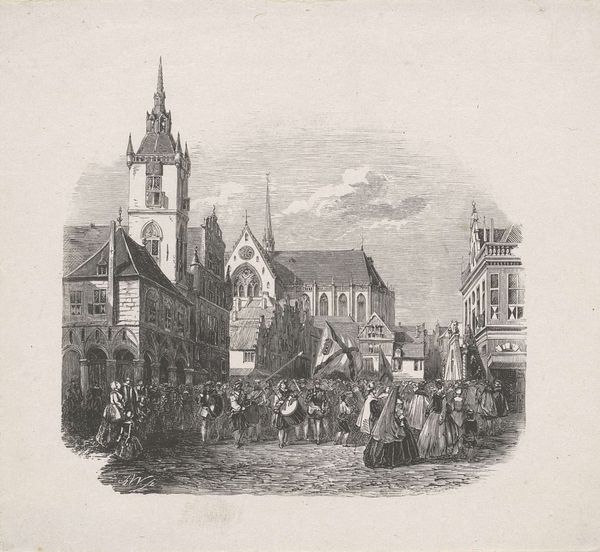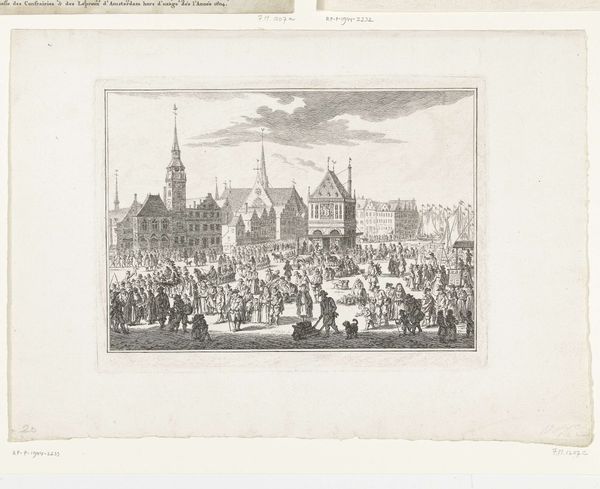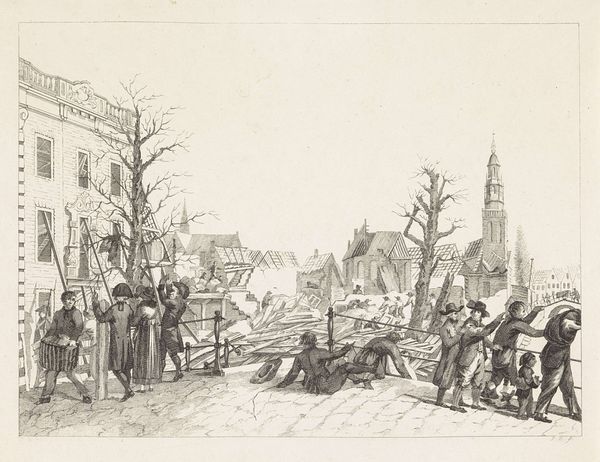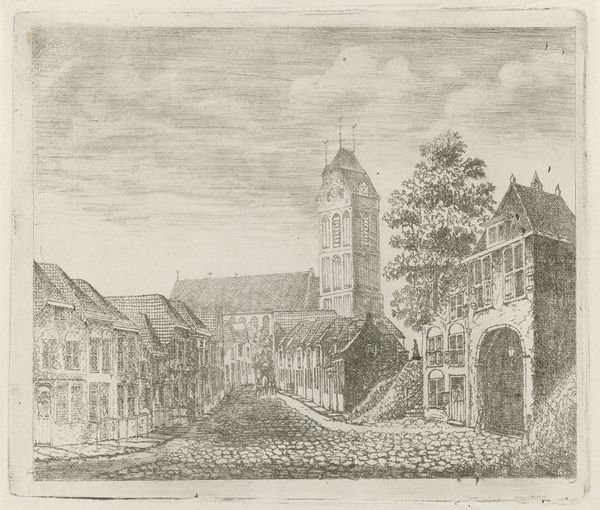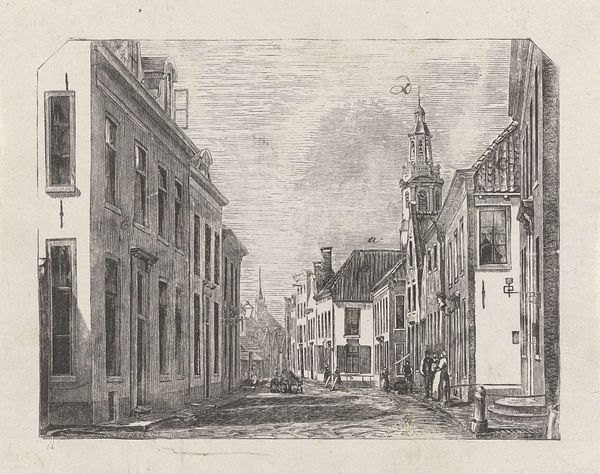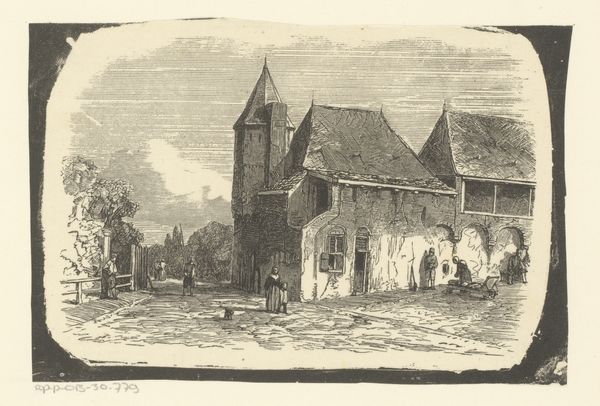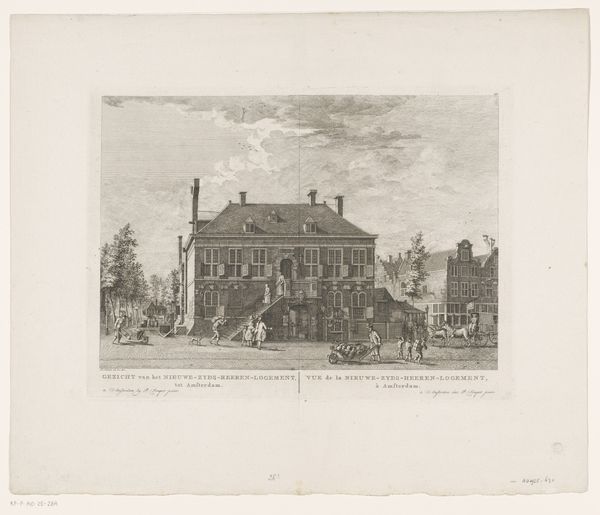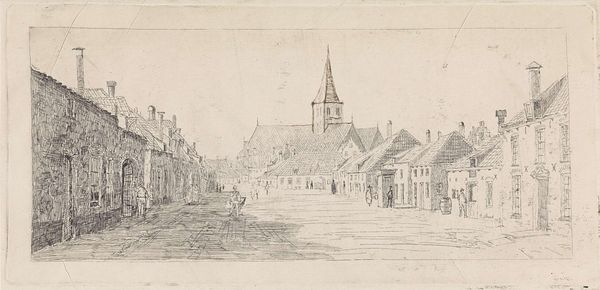
Dam te Amsterdam in de middeleeuwen met een figuur op een podium voor een groot publiek 1836 - 1912
0:00
0:00
print, engraving
# print
#
cityscape
#
genre-painting
#
history-painting
#
engraving
#
realism
Dimensions: height 184 mm, width 277 mm
Copyright: Rijks Museum: Open Domain
Curator: I am struck by the stark contrasts and the sense of drama in this print; it feels so meticulously observed. Editor: It is, isn't it? We're looking at "Dam te Amsterdam in de middeleeuwen met een figuur op een podium voor een groot publiek" ("Dam in Amsterdam in the Middle Ages with a figure on a podium in front of a large audience"). It's an engraving by Isaac Weissenbruch, placing us somewhere between 1836 and 1912. What catches my eye is how the composition focuses our gaze on the interactions within the crowd, likely illustrating the performative nature of power structures. Curator: Yes, absolutely. And what materials! As an engraving, the line work speaks volumes. Note the level of detail, and what that suggests about artistic labor and craft practices of that period. I see class divides visually constructed. A figure commands attention on the makeshift stage; who benefits and who suffers under the shadow of that town hall? Editor: I appreciate you emphasizing the production process. It highlights the skill in capturing the architectural details – that incredible tower – and contrasting it with the rough textures suggesting the everyday bustle of the crowd. Think about what Dam Square represented historically. Curator: Precisely. Public executions, political debates, market trading – all taking place in a space so intertwined with the exercise of civic authority. I question: Who has the liberty of expression in this picture? Who bears witness? Editor: This makes me want to explore how prints like this circulated. Weissenbruch probably saw his work as an extension of reporting on the events in the Dutch capital, for consumption within a particular societal niche. And to whose advantage did they report? Curator: By paying attention to both subject and means, this engraving pushes us to critically evaluate representations of the past, highlighting hierarchies that impact diverse groups in public and the narratives crafted to validate them. Editor: And I think examining how an image like this moved through society and influenced material culture provides an opening to deeper understanding, today, of visual representation’s historical importance. Thank you for pointing this all out, as I consider our own modes of engaging art, here, and now.
Comments
No comments
Be the first to comment and join the conversation on the ultimate creative platform.
